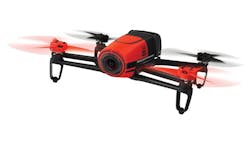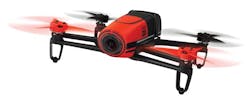The U.S. Department of Transportation’s Federal Aviation Administration’s (FAA) announced plans to release operational rules for routine commercial use of unmanned aircraft system (UAS). With the Small UAS Rule (Part 107), drones are estimated to generate more than $82 billion for the U.S. economy and create more than 10,000 jobs over the next 10 years. The rule will go into effect on August 29, 2016. The FAA also generated instructions on how to fly UAS for work and business.
“We are part of a new era in aviation, and the potential for unmanned aircraft will make it safer and easier to do certain jobs, gather information, and deploy disaster relief,” says U.S. Transportation Secretary Anthony Foxx. “We look forward to working with the aviation community to support innovation, while maintaining our standards as the safest and most complex airspace in the world.”
The new rule requires that pilots hold a remote pilot airman certificate or be supervised by someone who does, and be at least 16 years of age. To qualify for the certificate, persons may sit for an aeronautical knowledge test at an FAA-approved testing center, or get a part 61 pilot certificate other than student pilot, and complete a flight review and online training course provided by the FAA. Pilots must also be vetted by the Transportation Security Administration.
The rules also require that aircraft over 55 lbs. must be registered with the FAA. Furthermore, aircraft must undergo a pre-flight check for safety and operation. They may not be flown within five miles of airports, unless the pilot notifies the airport and air-traffic control personnel. On top of that, they must yield right of way to manned aircraft and be flown in the pilot’s line of sight. Users must obey community safety guidelines as well.
Finally, the drones may only be used for commercial, educational, or recreational purposes. Activities that fall into these categories include doing roof inspections or real-estate photography, or surveying.
For a further summary of the Small Unmanned Aircraft Rule (Part 107), click here (PDF). For a document describing how to use the rule, click here (PDF).
Looking for parts? Go to SourceESB.
About the Author
Leah Scully
Associate Content Producer
Leah Scully is a graduate of The College of New Jersey. She has a BS degree in Biomedical Engineering with a mechanical specialization. Leah is responsible for Machine Design’s news items that cover industry trends, research, and applied science and engineering, along with product galleries. Visit her on Facebook, or view her profile on LinkedIn.

